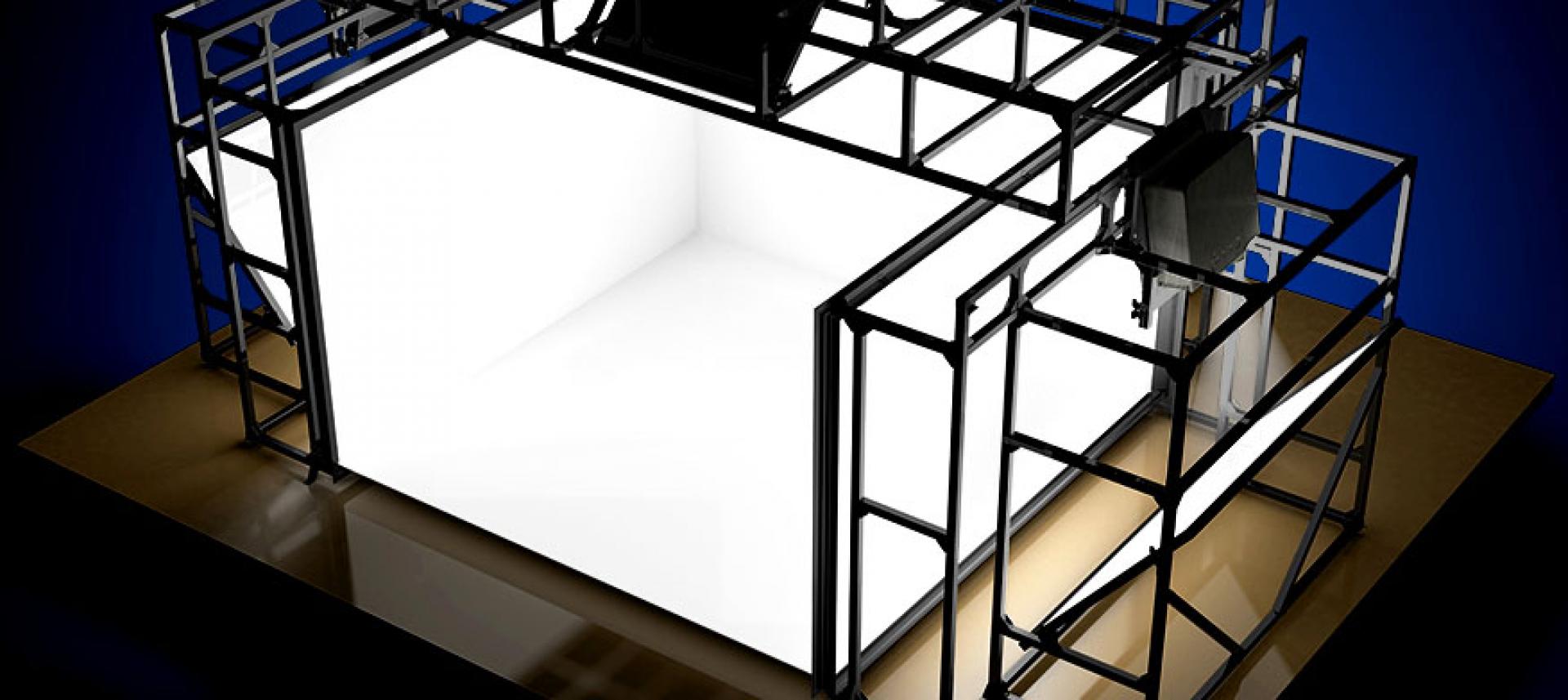
Immersive displays can utilise front or rear projection surfaces. Find out the difference.
The distinction seems simple: front projection screens reflect light while rear projection screens diffuse light through the material from behind the screen. But how do you go about choosing the right type of screen for your immersive VR room or simulation project and what are the factors to take into account?



















